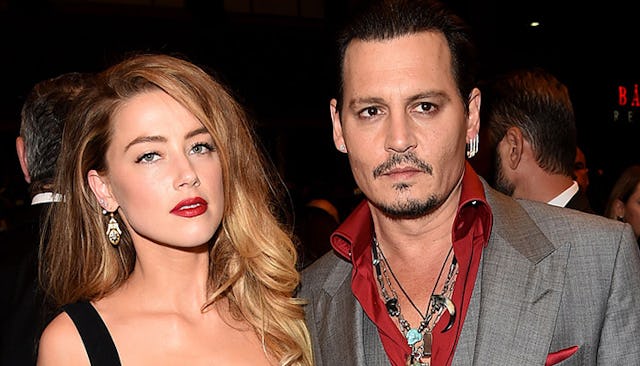Amber Heard Donates Every Penny Of Her Divorce Settlement To Charity

Amber Heard wants to “help those less able to defend themselves”
After allegedly living through the nightmare that is domestic violence, Amber Heard is donating millions of dollars from her divorce settlement to Johnny Depp to help other victims. Months of media scrutiny, where she’s been forced to defend her character constantly, gave Heard first hand knowledge of how horrific the court of public opinion is in these cases.
Her settlement was $7 million, and every single dollar is going to charity. She’s giving half the money to the Children’s Hospital of Los Angeles, where she’s volunteered her time over the last 10 years. The other half is going to a cause we should all support – ending domestic violence. The American Civil Liberties Union will spend the nearly $4 million on their work “with a particular focus to stop violence against women,” Variety first reported.
Having allegedly experienced the cruel circumstances domestic violence victims routinely face, Heard is donating the money to help those with fewer resources. “Money played no role for me personally and never has, except to the extent that I could donate it to charity and, in doing so, hopefully help those less able to defend themselves,” she shared. If you’ve been following the story then you know Heard made accusations of domestic violence during the divorce and provided a photo showing bruising around her eye. Various people close to the couple said the violent incident wasn’t an isolated case. Recently a video surfaced showing Depp in a fit of rage in their kitchen.
Despite what many would consider proof, most people attacked Heard, accusing of her being a liar who harmed herself “just for the money.” This line of thinking is utterly ridiculous for many reasons one of which being that Heard is a successful actress who doesn’t need more money and likely wouldn’t do anything to destroy her gorgeous face. Sadly, people’s decision to attack the alleged victim is incredibly common in domestic violence cases. When a woman is attacked in the U.S., we force her to prove that she isn’t lying. In rape cases the common questions are “how much did you have to drink?” and “what were you wearing?” In domestic violence cases the questions are typically along the lines of “how do I know you didn’t do this to yourself?” and “what did you to set him off?” It’s a disgusting response to a horrific situation no one wants to be in, and frankly, it’s the main reasons domestic violence victims are dying.
Seventy-two percent of all murder-suicides involve an intimate partner; 94% of the victims of those murder-suicides are female. In almost every case those victims struggled to come forward and share their stories of abuse, and when they did they were treated the same way as Heard – disbelieved. Not trusting the victim means less protection from law enforcement, which turns into more opportunities for abuse. Every 9 seconds a woman is assaulted or beaten in the U.S and 1 in 3 women and 1 in 4 men have been victims of [some form of] physical violence by an intimate partner within their lifetime.
“For years, we have worked through the courts and legislatures around the country to make sure that domestic violence victims are fully protected by the law and receive the government assistance they deserve,” Anthony D. Romero, executive director of the American Civil Liberties Union, told reporters. “We could not be more thankful for Ms. Heard’s support- she can be confident that this gift will help other women live safely and freely.”
Whether you became a Depp fan after Edward Scissorhands or 21 Jump Street attacking Heard is a heartless response to a valid domestic violence claim. We don’t all have millions of dollars to donate to domestic violence victims. And we don’t need it to help them – we can each start by simply listening and believing the victim first instead of assaulting their character.
This article was originally published on